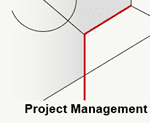
In a previous article, we explored agile product development with a focus on early product validation.
There are additional key enablers from agile/scrum that can be borrowed and applied to any product development process, however.
In this article, we’ll compare and contrast the role & responsibility for scrum masters vs. project managers/core team leaders.
Let’s start with (all) the basic scrum roles:




